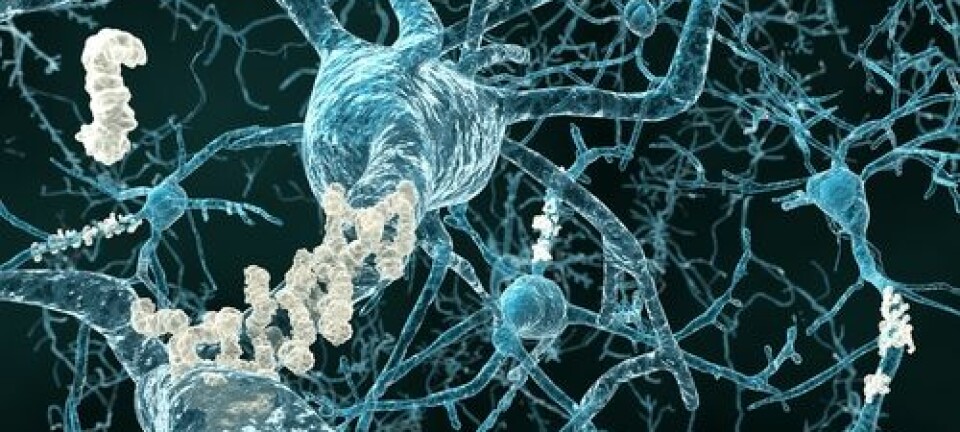
Alzheimer’s prevention can vary between populations
A gene variation that protects against Alzheimer’s is missing in most Danes but not in other Nordic populations.
Our ability to feel, think, and remember all depends on our brain cells’ ability to send and receive signals. As we get older, a type of plaque can appear around the cells, which prevents them from communicating properly, and this makes us mentally slower. The occurrence of plaque is especially common in Alzheimer’s and dementia patients.
A new study shows that a special gene variant which protects against the plaque is much rarer in people from Denmark than in people from Sweden, Norway, Iceland, and Finland.
The finding surprised the scientists.
“It’s a quite interesting and peculiar discovery,” says study co-author Jonas Mengel-From, an associate professor of molecular epidemiology at the University of Southern Denmark. “We initially didn’t believe our results so we had other scientists double check our analysis. It turned out to be correct so it seems like we Danes are very different from our neighbours on this particular area even though we are so alike in most other aspects.”
This suggests that it might be necessary to design Alzheimer’s prevention differently between populations, says Mengel-From.
He says previous Alzheimer’s studies have had a tendency to look at large populations from many different countries.
“But we can now see there are differences between neighbouring countries. That means we have to be aware that our studies can give different results from country to country,” says Mengel-From.
No one knows why the Danes are different
The scientists from University of Southern Denmark and University of Helsinki analysed genes from 3,487 randomly selected Danes and compared the results with gene analyses of Norwegians, Swedes, Fins, and Icelanders.
They were particularly interested in the gene variant A673, which is known to affect the amount of plaque in the brain.
The results revealed that only one out of the 3,487 Danes had the gene variant while around 1 in 125 of the other Nordic groups had it. Another analysis found that 1 in 500 had the gene variant.
Mengel-From says they cannot explain why the Danes are so different from their neighbours on this particular area.
“We can only speculate,” he says. “Either it is completely random or it is caused by genetic selection.”
An example of genetic selection, says Mengel-From, is the gene that causes pale skin and red hair. “The pale skin is an advantage in northern Europe where the sun doesn’t shine as much and the ability to create vitamin D from sunlight is important.”
The red hair can be seen as an added feature that comes with the advantageous gene variant.
“Perhaps something similar holds true for the gene that protects against Alzheimer’s. It might be that it is also coding for something else that has an advantage in the most-northern areas of Europe,” he says.
Implications for Danish origins
Another possibility is that Danes have simply been better at mixing their genes with other populations than their northern neighbours, suggests Professor Eske Willerslev, Centre for GeoGenetics, Natural History Museum of Denmark.
Willerslev did not participate in the new study but has previously published papers on how populations have mixed and developed over the past millenniums.
“Our studies show at least two periods in time where Northern Europe is populated. The first one happened 8,000 to 9,000 years ago when peasants from the Middle East pushed up through Europe and left traces in our genes. But Scandinavians are actually closer related to the Yamnaya people who came from the Russian steppe about 5,000 years ago. They brought a rare gene, which makes us lactose tolerant and gives us the ability to drink milk during adulthood,” he says.
But, says Willerslev, it could be that there was a third major migration, which also caused a change in the northern Europeans' genes.
“We're looking into that now,” he says. “Perhaps this third migration is responsible for the gene [which protects against Alzheimer's] not occurring as often in Danes as in other Scandinavians.”
A second gene variation that protects against Alzheimers, APOE, has also been proven to be more common in northern Europe but the reason why is uncertain.
--------------
Read the Danish version of this story on Videnskab.dk
Translated by: Kristian Secher










